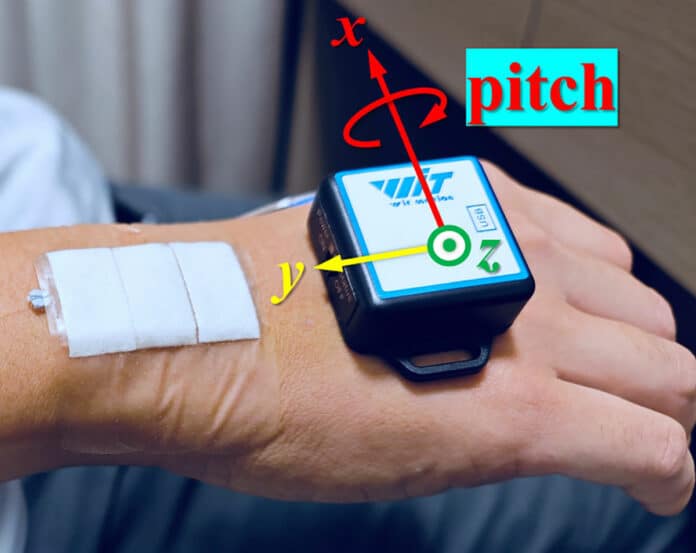Stroke is a major cause of death related to cerebrovascular diseases in China, with high morbidity and mortality rates. Its aftermaths, such as hemiparesis, facial paralysis, and speech or swallowing disorders, can significantly impact the daily lives of affected individuals and their families.
Despite medical advancements, stroke‘s growing prevalence, especially in the aging population, requires a comprehensive stroke rehabilitation service focused on motor recovery to alleviate post-stroke symptoms and improve survivors’ functional capabilities.
Chinese scientists from Beijing Normal University, Sun Yat-sen University, and Guilin University of Electronic Technology have developed a new type of wearable sensor that can turn hand or finger movement into communication without having to say anything or tap a touch screen. The device could open new possibilities for rehabilitation applications and help those with disabilities to communicate more easily.
The new sensor features a soft, flexible, biocompatible polydimethylsiloxane (PDMS) silicone base material combined with an optical component known as a fiber Bragg grating (FBG). It is designed to be comfortable for long-term wear without discomfort or irritation and can detect movements with high accuracy.
“For someone recovering from a stroke, these sensors could monitor wrist, finger, or even facial movements to monitor their rehabilitation progression,” said Kun Xiao from Beijing Normal University in China. “For individuals with severe mobility or speech impairments, the sensors could translate gestures or facial expressions into words or commands, enabling them to communicate with others or interact with technology more easily.”
The researchers achieved this by creating patches using a flexible and skin-friendly PDMS. To provide the patch its movement-sensing ability, the researchers integrated FBGs into the PDMS. FBGs are a type of reflector that is etched into a short optical fiber segment to reflect specific wavelengths while transmitting all the others.
The sensors in the patch can detect even the slightest changes in the way light passes through the fiber optic during movement, enabling the system to identify specific movements by analyzing the modifications in the light’s behavior.
Researchers found that using a thicker PDMS patch resulted in a more pronounced wavelength shift and improved the sensitivity of optical sensors. These sensors can be applied to different parts of the body and can be calibrated precisely for each user, making them adaptable for various applications.
The researchers conducted a series of tests to demonstrate the capabilities of their PDMS-embedded wearable FBG sensors. Their focus was on gesture recognition and communication assistance. They calibrated the sensors for individual participants and attached them to different parts of the body, such as the wrist and fingers, to detect various movements.
They also developed a system that could translate simple gestures into commands or messages, demonstrating high sensitivity and accuracy in recognizing a wide range of gestures.
The sensors were able to detect subtle movements that may be challenging for traditional sensors to pick up. In the communication assistance experiment, the sensors translated gestures into words, showcasing their potential as an assistive technology for individuals with speech or mobility impairments.
“Beyond detecting movement, these adaptable sensors could be tailored for applications such as monitoring other health indicators like respiratory or heart rate by detecting subtle body movements,” said Rui Min from Beijing Normal University. “They could also be useful for athletes or fitness enthusiasts to monitor and improve their form or technique in real-time or be integrated into gaming systems for more immersive and interactive experiences.”
Researchers are now working to make the sensor system even smaller and more integrated so that it can be easily worn. They are also enhancing the sensors’ ability to communicate wirelessly with smartphones, computers, or medical devices, allowing users to interact with the technology and help caregivers or medical professionals monitor progress or data in real time.
In addition, they are making improvements to the robustness and durability of the sensors to make sure they can withstand daily wear and tear, including exposure to moisture, heat, and stretching. All of these efforts will make the technology ready for practical use and for further studies through clinical trials.
Journal reference:
- Kun Xiao, Zhuo Wang, Yudong Ye, Chuanxin Teng, and Rui Min. PDMS-embedded wearable FBG sensors for gesture recognition and communication assistance. Biomedical Optics Express, 2024; DOI: 10.1364/BOE.517104
